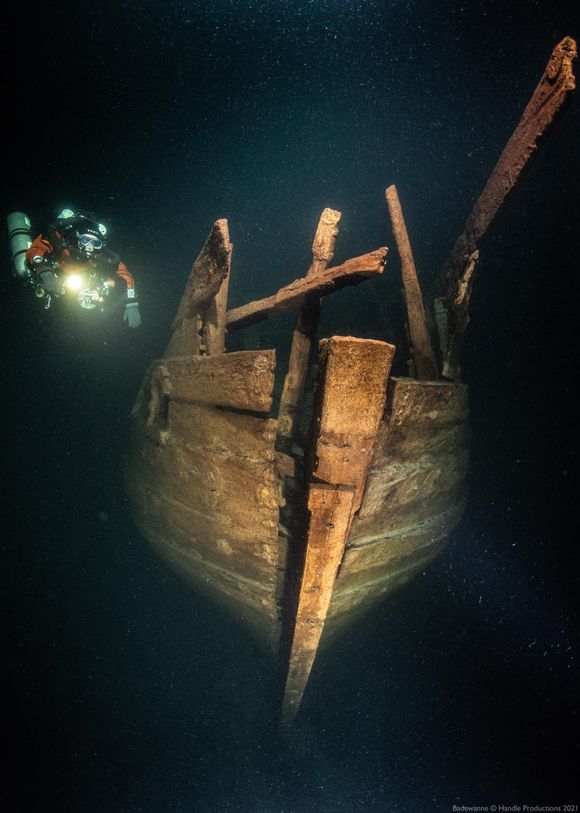Unique Gulf of Finland shipwreck may be 400 years old
The wreck was found at a depth of 85 metres and appears from engravings to have been built in 1636.

Image: Badewanne Oy / Handle Productions
Last year, voluntary divers with the international non-profit organisation Badewanne discovered a unique, exceptionally well-preserved shipwreck at a depth of 85 metres on the bottom of the Baltic Sea between Finland’s Hanko peninsula and the Estonian island of Hiiumaa.
The diving team also found a wooden transom — the vertical reinforcement that strengthens the stern of a boat — next to the wreck of the ship, which is believed to be a Dutch-style sailing vessel known as a ’fluit’ or ’fluyt’.
This summer the divers managed to turn over the transom, which was laying face down on the seabed, to reveal an engraving with the year 1636 alongside the image of a swan, which is presumed to represent the name of the ship.

A 3D graphic image of the ship. Image: Badewanne Oy / Handle Productions
Diver Jouni Polkko told Yle that the time for research work is limited to only 20 minutes per dive, but each trip takes an entire day.
”It takes two and a half hours to get to the surface from that depth,” Polkko said.
According to Niklas Eriksson, a maritime archaeologist at Stockholm University specialising in fluits, the ships were identified at the time on the basis of the information engraved on the transom. Pieces of the transom have been found in marine archaeological research in the past, but this is the first time, according to Eriksson, that all transom information is available.
”More detailed investigations are likely to reveal the coat of arms that will show the ship’s home port,” Eriksson said.
The real reason for the sinking of the ship may never be clear, Polkko said, noting that there are a couple of manual water pumps on the deck of the wreck. This suggests the crew may not have had time to pump water out fast enough.
”At that time, grain was transported in the hold of the ships. If a lot of water gets in there, it could block the pumps,” Polkko explained.

The transom of the ship revealed an engraving with the year the vessel was built as well as an image of a swan. Image: Badewanne Oy / Handle Productions
Fluits were three-masted sailing vessels used by the merchant navy of the Dutch Republic, with which the country controlled maritime traffic in the Baltic Sea from the beginning of the 1600s to the middle of the 1700s. In Baltic maritime traffic, fluits usually sailed unarmed so that they could carry as much cargo as possible with a small crew.
The Badewanne diving team will continue to research the history of the wreck alongside maritime archaeologists Minna Koivikko from the Finnish Heritage Agency and Martijn Manders from the Cultural Heritage Agency of the Netherlands, as well as with Eriksson from Stockholm University.
In light of the new information, Manders said it may be possible to establish the identities of the ship’s last crew.
”The fluit shows the typical Dutch approach to shipbuilding and symbolises the thriving merchant shipping of the era,” Manders said.
A documentary film, ”Fluit”, is also in production and attempts to discover the final fate of the ship.
Sources: Yle
